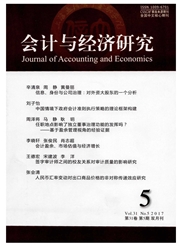

 中文摘要:
中文摘要:
从农业供给侧改革视角,针对传统的Malmquist指数不具有传递性特征并且面临潜在的线性规划无解问题,结合非径向、非角度的SBM函数,仿照GlobalMalmqusit生产率指数的构造思路,提出了一种新的SBM-GlobalMalmqusit生产率指数,分析了2001-2013年中国农业全要素生产率及其构成。研究结果表明:中国农业全要素生产率呈现出较大的波动性,但从长期看呈现出增长的态势,其动力主要来源于技术进步,而不是技术效率的改善;技术进步与技术效率水平的变化严重背离,很少见到二者同时增长的情况;区域间农业全要素生产率的差异较大。
 英文摘要:
英文摘要:
From the perspective of agricultural supply side reform, the traditional Malmquist index does not have the transitive characteristics and faces the potential linear programming problem. Combining the non-radial and non-angle SBM functions and taking account of the construction idea of the Global Malmqusit productivity index, we propose a new SBM- Global Malmqusit productivity index, and further analyze the total factor productivity and its composition of China' s agriculture from 2001 to 2013. The results indicate that the total factor productivity of agriculture in China shows a large fluctuation, and a growth trend in the long run. The main force of growth comes from technological progress, not from the improvement of technical efficiency. The technological progress and technical efficiency evolves divergently, but they seldom grow at the same time. The difference of total factor productivity across the regions is large.
 同期刊论文项目
同期刊论文项目
 同项目期刊论文
同项目期刊论文
 期刊信息
期刊信息
